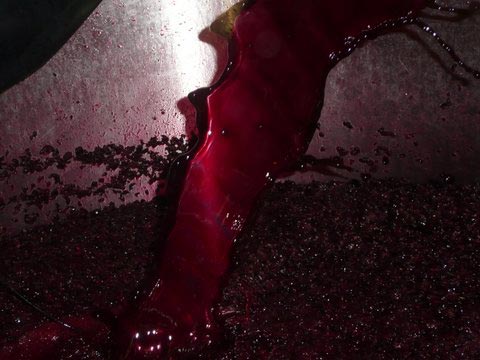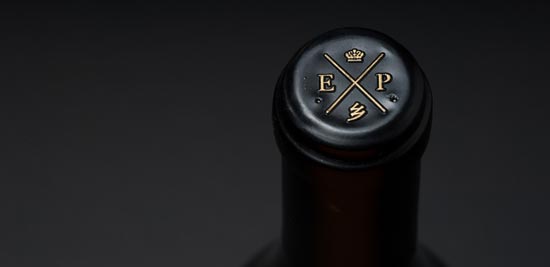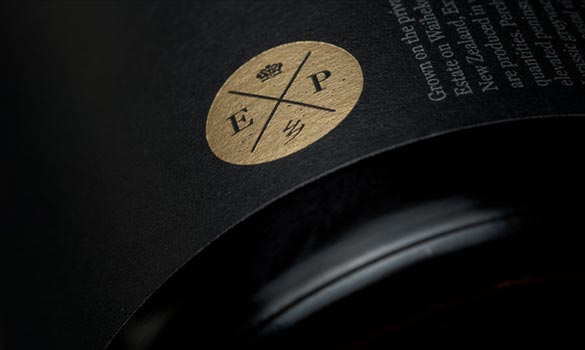THE JOURNEY BEGINS. THE CARETAKER
Luc insists that the winemaking process is more or less the role of a caretaker. He planted specific wines suited to each of the sites and not simply vineyards. His philosophy is to create the wines in the vineyard and he remains very focused on adapting and fine tuning each ‘wine’ during the varied growing season conditions of each vintage.
He employs rigid low yield strategies and insists on being highly selective of the berries that enter the wine vats during vintage months. He practices a rationalized sustainable viticulture with a preference toward organics as far as practicable. He ensures rigid temperature controls for both heating and cooling during all phases of grape processing, wine production and storage. Luc avoids the use of harsh chemicals in the winery whilst maintaining a pristine and healthy environment within the winery and cellars.
TRIPLE TRIAGE
The grapes undergo a triple ‘triage’ process before the selected berries enter the wine fermentation vats.
The first triage is done in the vineyard when the immature ‘green pea’ sized grapes are assessed and up to 65% are removed from the vines in order to ensure consistent size and ripeness and most importantly to set the desired low yield crop weight of between one and two tonnes / acre.

This will ensure that the energy from each vine will be directed toward producing a small crop of finely concentrated wine grapes.
The second triage is at harvest time when hand harvesters are instructed to remove any ill formed, discoloured or damaged grapes before they enter the picking baskets. The third triage occurs at the winery after the stems have been removed from each grape bunch. The berries are rolled along a vibrating sorting table where under Luc’s ever watchful eye, our team again select out any undesirable vegetal matter and discoloured or damaged berries, just before they drop directly into the sterilised fermentation vats.
Typically the fresh berries are chilled and soaked together for several days before being gently warmed and then inoculated with specific strains of cultured yeast which induce the alcoholic (primary) fermentation. During eight days the fermentations are hand plunged every four hours (24 hours / day) in order to maintain homogenous temperature and optimize a consistent and gentle extraction of both tannins and colour. Once the primary fermentation is complete there will often be a period of warm maceration of the skins and grape seeds within the raw new wine, during which time cultured malo lactic bacteria will be incorporated to encourage malo-lactic (secondary) fermentation. This two to three week fermentation is undertaken at 24 degrees celcius in order to soften the grape acids, stabilize the wine, and enhance the wines ‘plumpness’ in the mouth.
MACERATE, RACK AND BARREL
Depending on the grape condition, Luc will often decide to macerate the wine together with the grape skins and pips for up to 60 days in order to attain the optimum level of body and flavor in the new wine. Once he is satisfied that the desired result has been achieved each vat is carefully pressed off and put separately into 225 litre French and American fine grained white oak, new or one year old barrels. The wine is removed from the barrel and returned back (racking) to the same barrel two to three times during the 15 - 18 months of the ‘elevage’ or upbringing of the wine. Each racking will help clarify the wine and offer Luc a chance to blend selected barrels together to gradually form the final wine blends and progressively and masterfully weave the wines from the different barrels of each vineyard parcel

together to achieve the optimum expression of taste and character that best represents the vintage.
Each barrel is regularly monitored and tasted then trial blended in the winery laboratory, before final determinations are made as to where it will fit within the final Expatrius blends.
Generally the wines are handled “as little as possible” and we often practice co-fermentation (fermenting different grape varieties together in the same vat) which effectively is a start to the blending process right from harvest. Luc’s focus is on early blending to ensure the wines are woven together and raised as a completed ‘assemblage’ as soon as possible in order to optimise integration.
USE OF OAK AND VINTAGE EXPRESSION
Oak barrels are 100% medium to fine grained 225 litre white oak selections. Generally Luc uses an approximate 65% to 35% split of French vs American oak on Syrah and 80% to 20% on the cabernet Blend of 8. Luc is meticulous in his use of various oak selections and toast levels for each varietal vineyard parcel.
“Oak strategy will vary from vintage to vintage depending on the composition of the grapes due largely to the growing season’s climatic variables. The important thing is not to allow the oak to dominate the wine, it should complement and support the wine.” explains Luc.
“Each vintage is a new, exciting and always a challenging experience” says Luc. “I am not able to make artisan wines to a specified formula if I wish to optimize each vintage expression. I must enter the vineyards each day to remain in touch with the vine and grape development, just as importantly, I must regularly taste the vats and then the barrels to follow the progression of the wines and ensure that my interpretation and consequent technical interventions are well timed so as to guide the winemaking process smoothly toward an optimal and unique expression of our vineyard sites from year to year.”

WINEMAKING PHILOSOPHY
When asked about his winemaking philosophy Luc goes on to say: “My French training offered me the unique opportunity to gain an insight into many of the inter- generational winemakers of France philosophies. Wine growing is an ancient practice and necessarily becomes an integral part of a winemaker’s daily life. In many ways this dedication to the vine within a specific environment continually teaches the grower many things about the earth, the environment, the local people and quite simply about the many virtues, values and challenges of life itself. Through this dedication I am attempting to offer my customers a certain ethereal experience that comes from each bottle of wine which we meticulously craft from our special place, over a precise period in the earths natural cycle.”